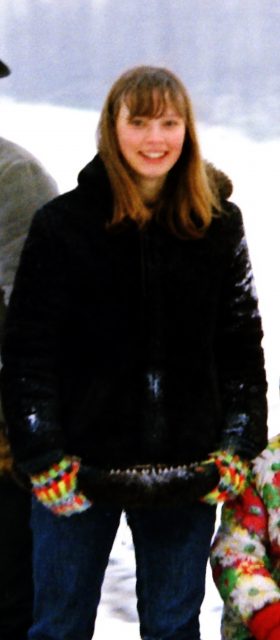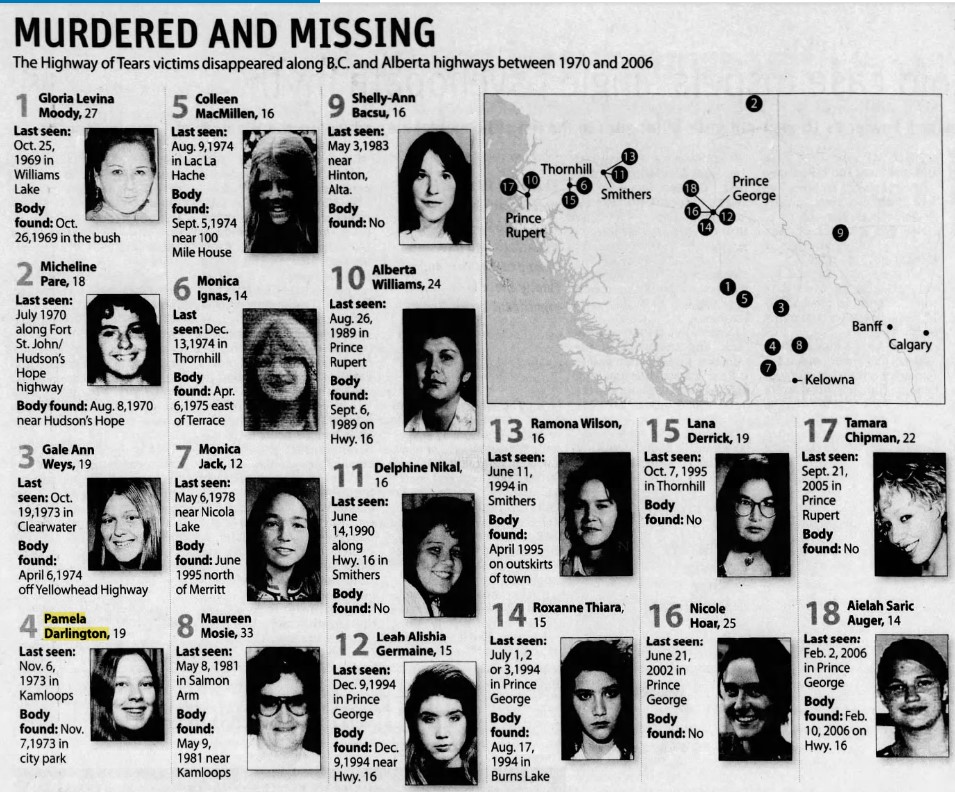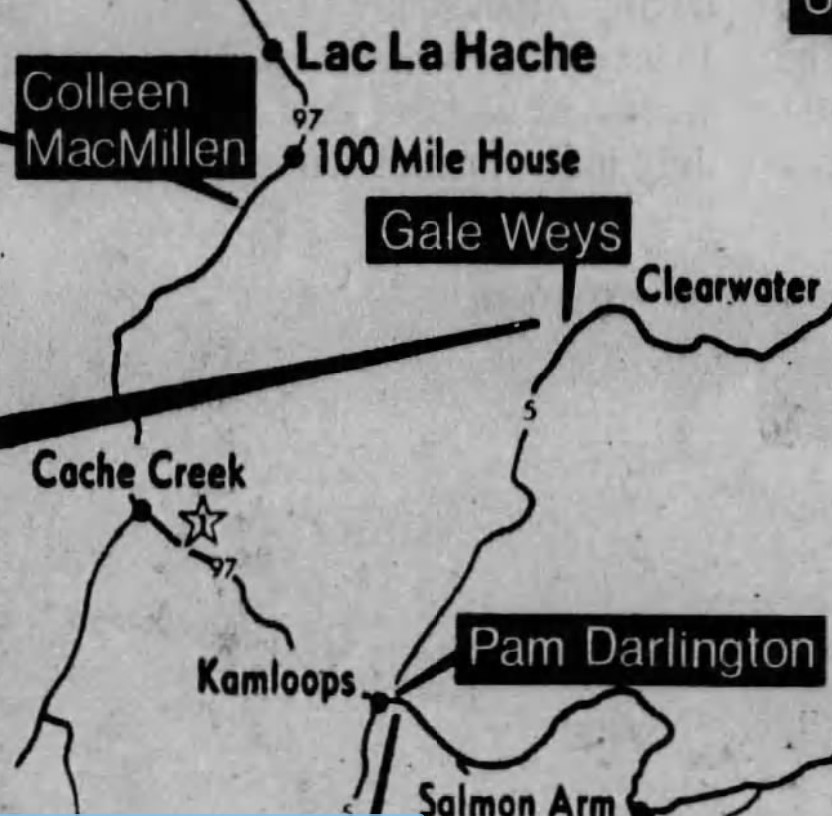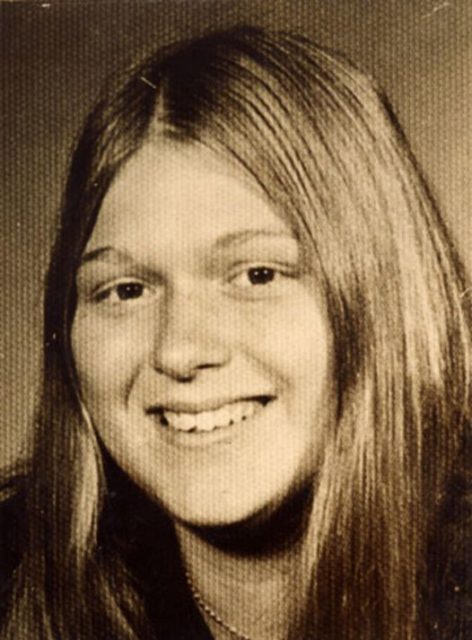Pamela Darlington turned 19 on October 21, 1973. Seventeen days later her body was found at the edge of the Thompson River in Kamloops. She claims the number four spot on E-Pana’s list—the RCMP’s task force that was set up in 2005 to investigate 18 Highway of Tears cases of missing and murdered women.

From Cold Case BC: The Stories Behind the Province’s Most Intriguing Murder and Missing Person Cases
Kamloops:
Pamela Darlington’s movements on the last night of her life are unclear. According to her sister Laurel, when she found her car wouldn’t start she decided to hitchhike into town to meet friends, something that wasn’t uncommon in the 1970s. Pam’s cousin Sharon says friends told the family that she was seen at the Thompson pub that night with an unidentified, good-looking guy with shaggy hair. “My cousin Joe, Pam’s brother, always thought it was someone who Pam knew, who was infatuated with her, who committed suicide a year after she died.”
What we do know is that Pam’s body was found on November 7, 1973 in a park by the river. According to her death certificate, she had been sexually assaulted and beaten to death.

- Beneath Dark Waters: The Legacy of the Empress of Ireland Shipwreck by Eve Lazarus, coming April 2025. Preorder through Arsenal Pulp Press, online retailers or your your favourite indie bookstore
Loved people:
“It was many years ago, but I remember it like yesterday.” says Sharon. She says her cousin was an outgoing person who was always laughing and loved people. “When we were little, I was shy and reserved. Pam wasn’t scared of anything.”
Sharon says that over the years the family were told that RCMP believed that Ted Bundy had murdered Pam and were relieved when he was put to death. Later the family learned that Pam’s case was part of the RCMP’s E-Pana task force set up to look into the murders and disappearances of young girls and women along the Highway of Tears. Pam met all three of E-Pana’s criteria. She was engaged in “high risk activity” (hitchhiking), found near Highway 16, 97 or 5, and likely murdered by a stranger.

Gale Weys and Colleen MacMillen:
Less than three weeks before Pam’s murder, Gale Weys, 19 disappeared while hitchhiking from Clearwater to Kamloops. Her body was found six months later in a ditch along Highway 5. The following August, 16-year-old Colleen Rae MacMillen was hitchhiking to a friend’s home near Lac La Hatch. Her body was found along Highway 97.

DNA catches killer:
In 2012, DNA from Colleen’s clothes matched an American named Bobby Jack Fowler. He worked for a Prince George roofing company in the 1970s, but was never on police radar. Fowler died in 2006 while serving time for kidnapping, assault, and attempted rape.
Now retired, Sharon was a custom’s agent for Canada Border Services Agency and worked closely with various law enforcement agencies. “I tried hard to find out why Pam’s case remained open, even after they identified Bobby Fowler as her ‘probable murderer.’ I have never understood why DNA would not solve the case. I pursued this for many years, only to hear that the case had many problems with preservation of evidence and I am convinced that evidence was not properly maintained or even kept.”

Still unsolved:
In the mid-1970s, newspapers reported that Pam’s clothes were never found. But Sharon’s father told her that Pam’s clothes were found folded up near her body. If that’s true, they have long ago been lost or discarded and that’s tragic because DNA evidence could have confirmed that Fowler murdered Pam or prove that he did not. But despite what the RCMP call “similar fact evidence,” there wasn’t enough direct evidence to conclusively link Fowler to the murders of Pam and Gale. And, that’s heartbreaking for both families, because the murders are likely to remain forever unsolved.
“We were very close. We had plans to move out, get an apartment and start our young lives together,” says Sharon. “Everyone truly wanted to know the truth about Pam, but my uncle, aunt, father and mother are now all dead.”
For more information about these murders and others along the Highway of Tears see: Cold Case BC: The stories behind the Province’s most intriguing murder and missing person cases
© All rights reserved. Unless otherwise indicated, all blog content copyright Eve Lazarus.


